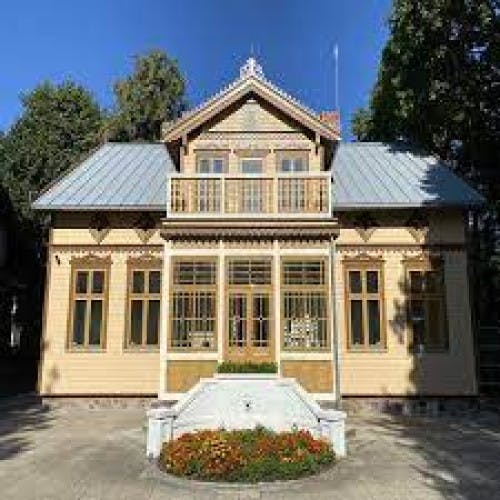One of the most unique departments of the National Museum of Lithuania is the Museum of the Burgomaster Jonas Šliūpas of Palanga, located in the summer capital of Lithuania.
The building of the museum is a one-storey wooden villa with an attic of a typical architecture. Its architectural elements - the most striking of which are the cornice and the glazed porch, which are surrounded by a cornice ornamented with a crenellation - are typical of houses built in resorts.
At the end of the 19th century, this wooden building was the villa of the Counts of Tiškevičius, who rented it out to the landlords and the landlords rented it out to holidaymakers. During the First World War, the building housed a German topographic office, which recorded the beach's shifting shores after storms. When Palanga was incorporated into the territory of the independent state of Lithuania, many of the villas and boarding houses changed hands.
In the summer of 1930, Jonas Šliūpas, the spreader of Lithuanian identity, moved to Palanga. He buys a house in front of a historic villa, which will soon become his place of residence and work. Thanks to the efforts of Jonas Šliūpas, Palanga is granted the status of a resort town, and in 1933, Jonas Šliūpas himself is elected the town's first burgomaster. The villa thus became the residence of the burgomaster, where the eminent statesman lived until 1944.
In 1989, the villa became the home of the Dr. Jonas Šliūpas Memorial Museum, which immediately became a branch of the Lithuanian National Museum, and was renamed the Jonas Šliūpas Memorial Museum of the Burgomaster of Palanga in 2020.
A memorial plaque dedicated to Jonas Šliūpas, created by sculptor Petras Gintalas, is attached to the building.
On the way to the museum, visitors are greeted by the Jonas Šliūpas monument. The bust is located next to the former house of J. Šliūpas (Vytauto str. 23a). The authors of the monument are sculptors Aloyzas Toleikis and Donatas Lukoševičius, the architect is Jolanta Galdikienė.
